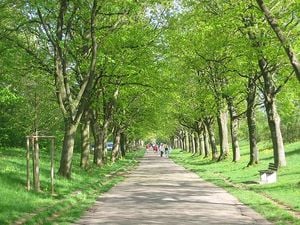
 Puerto Rico is using residents’ home batteries to back up its grid, grist.org (Jan 16, 2024)
Puerto Rico is using residents’ home batteries to back up its grid, grist.org (Jan 16, 2024)
Community Energy[edit | edit source]
- Adjuntas: a solar community, honnoldfoundation.org
Climate change in Puerto Rico[edit | edit source]
Climate change has had large impacts on the ecosystems and landscapes of the US territory Puerto Rico. According to a 2019 report by Germanwatch, Puerto Rico is the most affected by climate change. The territory's energy consumption is mainly derived from imported fossil fuels.
The Puerto Rico Climate Change Council (PRCCC) noted severe changes in seven categories: air temperature, precipitation, extreme weather events, tropical storms and hurricanes, ocean acidification, sea surface temperatures, and sea level rise.
Climate change also affects Puerto Rico's population, the economy, human health, and the number of people forced to migrate.
Surveys have shown climate change is a matter of concern for most Puerto Ricans. The territory has enacted laws and policies concerning climate change mitigation and adaptation, including the use of renewable energy. Local initiatives are working toward mitigation and adaptation goals, and international aid programs support reconstruction after extreme weather events and encourage disaster planning.
Ecoregions[edit | edit source]
Puerto Rico is home to three terrestrial ecoregions: Puerto Rican moist forests, Puerto Rican dry forests, and Greater Antilles mangroves. W
News and comment[edit | edit source]
2022
 There's a "solar energy insurrection" going on in Puerto Rico, from which we can learn. (Star Trek is also helping...), The Daily Alternative (Sep 22, 2022)
There's a "solar energy insurrection" going on in Puerto Rico, from which we can learn. (Star Trek is also helping...), The Daily Alternative (Sep 22, 2022)
2019
 It took scuba diving, yoga, line dancing, bike rallies and aerial dance for Puerto Ricans to remove their governor. Next: People's Assemblies, The Daily Alternative (Sep 03, 2019)
It took scuba diving, yoga, line dancing, bike rallies and aerial dance for Puerto Ricans to remove their governor. Next: People's Assemblies, The Daily Alternative (Sep 03, 2019)
About Puerto Rico[edit | edit source]
Puerto Rico (Spanish for 'rich port'; abbreviated PR), officially the Commonwealth of Puerto Rico, is a self-governing Caribbean archipelago and island organized as an unincorporated territory of the United States under the designation of commonwealth. Located about 1,000 miles (1,600 km) southeast of Miami, Florida, between the Dominican Republic in the Greater Antilles and the U.S. Virgin Islands in the Lesser Antilles, it consists of the eponymous main island and numerous smaller islands, including Vieques, Culebra, and Mona. With approximately 3.2 million residents, it is divided into 78 municipalities, of which the most populous is the capital municipality of San Juan, followed by those within the San Juan metropolitan area. Spanish and English are the official languages of the government, though Spanish predominates.
